Juice mission: Deal signed to build Jupiter probe
- Published
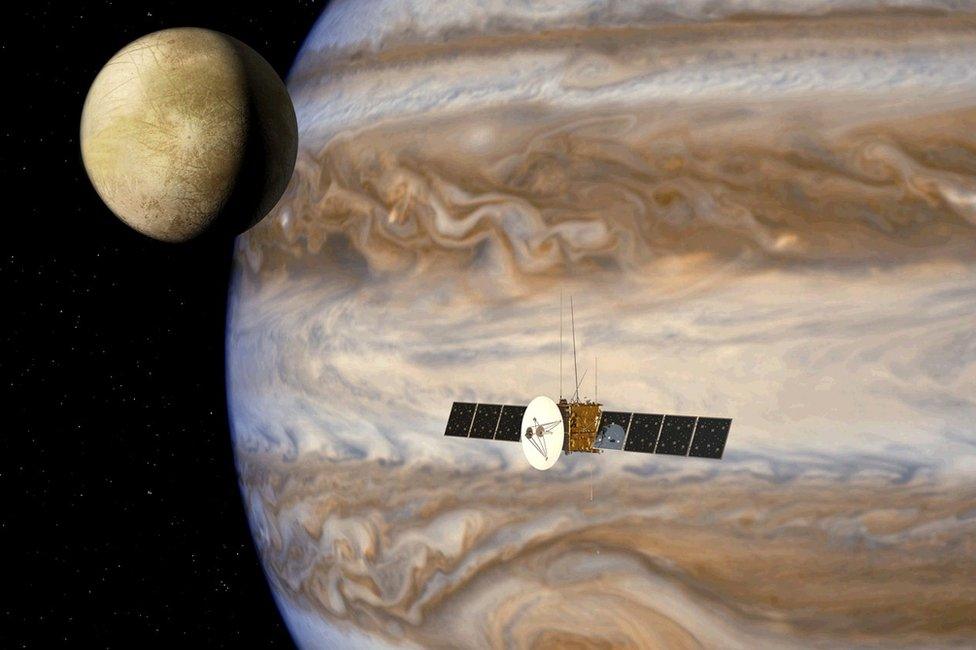
Artist's impression: Juice will operate at Jupiter through the 2030s
Airbus and the European Space Agency have signed the contract that will lead to the construction of a satellite to go to study Jupiter and its icy moons.
Known as Juice, the mission is due to leave Earth in 2022 and arrive at the giant planet 7.5 years later.
The 350m-euro deal struck between industry and Esa will see the assembly of the 5.5-tonne probe, external being led from Toulouse in France.
Components and instruments will be sourced from across Europe, however.
There will also be American participation as well, through the US space agency (Nasa), and from Japan via its space agency (Jaxa).
When all these contributions are summed - including launch and operations - the full price for the JUpiter ICy moon Explorer is expected to exceed one billion euros.
Tuesday's contract was signed in the presence of Alvaro Gimenez, director of science and robotic exploration at Esa, and Eric Béranger, head of space systems programmes at Airbus Defence and Space.
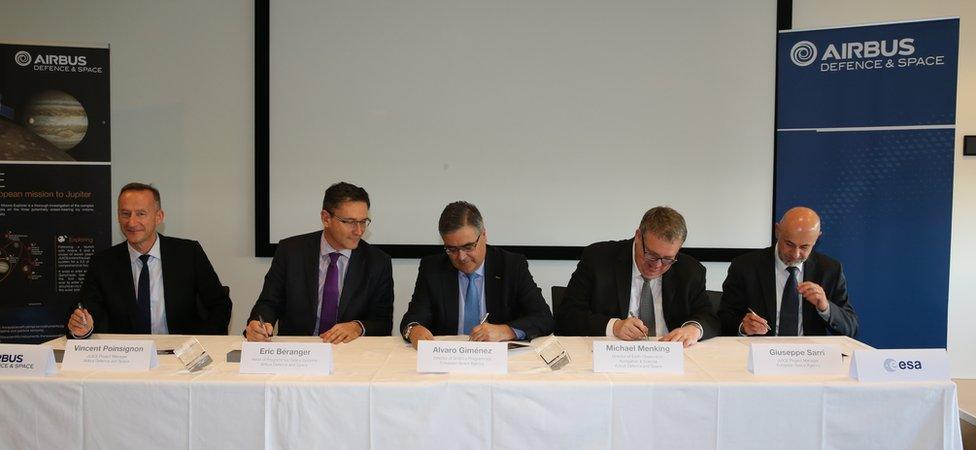
The deal is inked: Europe is going to build a space mission to go to Jupiter and its icy moons
As prime contractor, Airbus must now pull together a consortium of companies across Europe to build, assemble and test the satellite, making it ready for its launch on an Ariane 5 rocket in six years' time.
Juice will carry a sophisticated scientific payload - including cameras, spectrometers, a laser altimeter and an ice-penetrating radar. The mission will also feature a magnetometer, plasma and particle detectors, as well as radio science hardware.
To power all those instruments at Jupiter - a distance of 780 million km from the Sun - Juice will need the biggest solar array system ever flown on a planetary mission. This generator will have a collecting area of almost 100 sq metres.
To put that in some context: the Rosetta mission to Comet 67P has a collecting area of 64 sq metres; Nasa's Juno mission, scheduled to arrive at Jupiter next year, has an array surface measuring 72 sq metres.
After launch, Juice will use a series of gravitational flybys of Earth, Venus and Mars to hurl itself out to the Jovian system.
On arrival, the probe will swing around the planet to initiate a series of close passes of its moons Callisto and Europa. Juice will then put itself in a settled orbit around Ganymede.
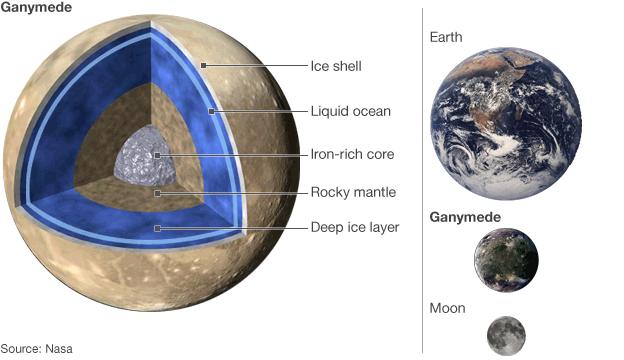
With a diameter of 5,268km, Ganymede is the largest moon in the Solar System
The research emphasis will be "habitability" - trying to understand whether there is any possibility that these moons could host microbial life.
Callisto, Europa and Ganymede are all suspected to have oceans of water below their icy surfaces. As such, they may have environments conducive to simple biology.
"Galileo's discovery of the giant moons of Jupiter four centuries ago caused a revolution in how we saw our place in the Universe," commented Prof Mark McCaughrean, Esa's Senior Science Advisor.
"By studying the icy crusts and deep sub-surface water oceans of Ganymede, Europa, and Callisto, Juice promises to open our eyes once again: could such places provide habitats for extraterrestrial life?"
Ganymede is the largest moon in the Solar System and the only one to generate its own magnetic field.
The magnetometer instrument that will be central to investigating this feature will be supplied from the UK.
Juice is the first Large Class mission selected by Esa in its co-called Cosmic Vision programme. That decision was made in 2012.
Member states have subsequently chosen to fly two further projects, one in the late 2020s and one in the early 2030s. These will be an X-ray telescope, and a trio of satellites to study gravitational waves.
Jonathan.Amos-INTERNET@bbc.co.uk, external and follow me on Twitter: @BBCAmos, external
- Published3 December 2015
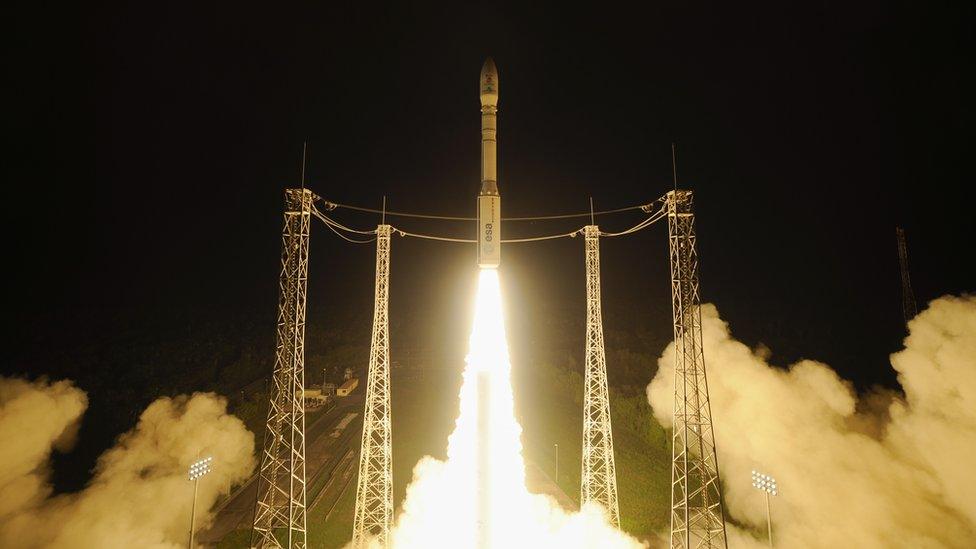
- Published2 May 2012
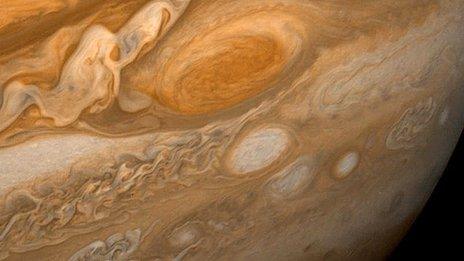
- Published27 June 2014
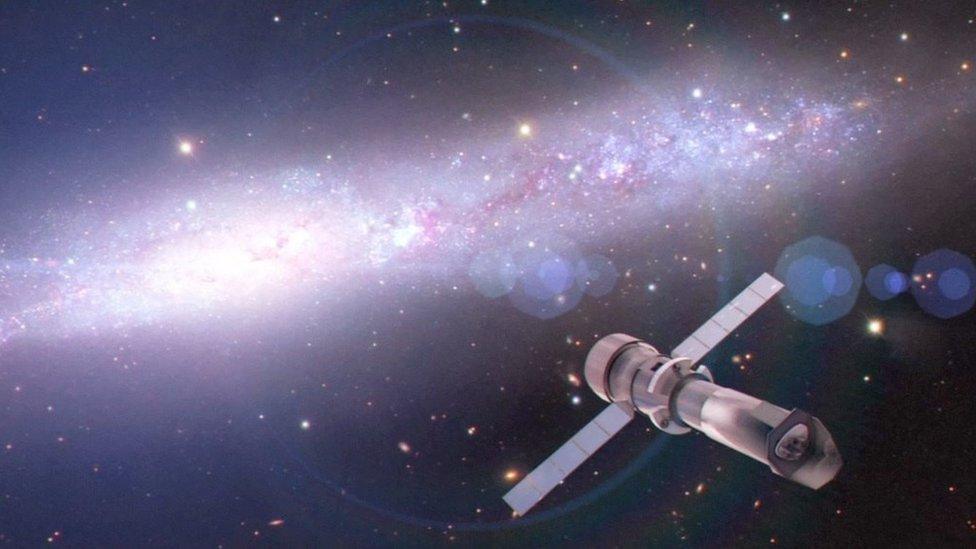
- Published28 November 2013